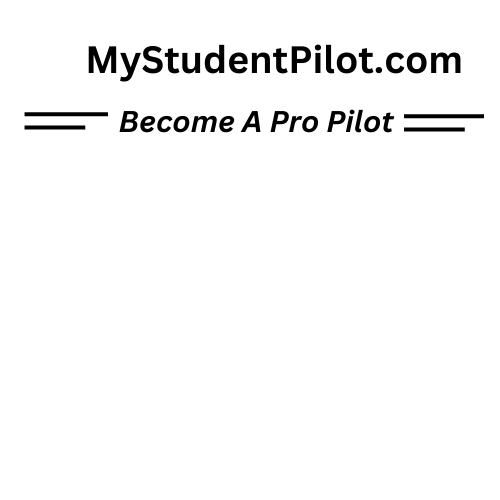Preparing to become an airline pilot is an exciting journey—but it requires careful planning, financial investment, and long-term commitment. Here’s a step-by-step guide on how to prepare to become an airline pilot, even if you’re starting with zero flight experience:
1. Understand the Career Path
Before diving in, get clear on the steps to becoming an airline pilot in the U.S.:
- Private Pilot License (PPL) – Your first license; allows you to fly for personal use.
- Instrument Rating (IR) – Enables you to fly in low-visibility conditions using instruments.
- Commercial Pilot License (CPL) – Legally allows you to get paid to fly.
- Multi-Engine Rating (ME) – Required to fly aircraft with more than one engine (most airliners).
- Certified Flight Instructor (CFI) – Optional, but helps you build flight hours.
- Airline Transport Pilot License (ATP) – Required to fly for an airline (minimum 1,500 hours total flight time in most cases).
2. Start Financial Planning
Flight training can cost $80,000–$100,000+ from zero to airline-ready. Start researching and preparing for how to fund your training:
- Federal Student Loans (through accredited aviation schools)
- Private Lenders (Sallie Mae, Meritize, etc.)
- Grants & Scholarships (Women in Aviation, AOPA, NGPA, etc.)
- Veterans Benefits (GI Bill)
Create a budget and timeline for earning each license. Knowing what it costs and how long it takes helps you stay focused and financially prepared.
3. Take Ground School and Learn Aviation Basics
You can take a online (like Sporty’s, Kings, or Gleim) or in person at a flight school. This gives you a head start when you begin your actual flight training.
Start preparing before you ever set foot in a plane by learning:
- The basics of how planes fly
- Airspace rules and regulations
- Weather and navigation
- Radio communication (and the phonetic alphabet)
- FAA regulations and pilot responsibilities
4. Schedule a First-Class FAA Medical Exam
Airline pilots are required to hold a First-Class Medical Certificate. You can get it from an FAA-approved Aviation Medical Examiner (AME).
Even if you’re years away from needing it, it’s smart to get checked early in case there are any disqualifying conditions that could derail your goals later on.
5. Take a Discovery Flight
Book a discovery flight at a local flight school. You’ll sit in the pilot seat, take the controls, and get a real feel for flying under an instructor’s guidance.
This is one of the best ways to confirm your passion for aviation before committing significant time and money.
6. Choose the Right Flight School or Program
There are two main types of training paths:
- Part 141 Flight Schools – Structured, FAA-approved curriculum (ideal for full-time students and loan eligibility).
- Part 61 Flight Schools – More flexible, ideal for part-time learners or those with tighter budgets/schedules.
Alternatively, you can attend an aviation university (like Embry-Riddle, Purdue, Liberty, or UND) or an accelerated flight academy (like ATP Flight School) that takes you from zero to commercial/CFI in 6–12 months.
Visit schools, talk to instructors, compare pricing, and look at job placement and airline pathway programs.
7. Immerse Yourself in the Pilot Community
Building a professional aviation career is more than just flight hours. Start networking early:
- Join pilot organizations: AOPA, EAA, Women in Aviation, NGPA
- Attend aviation events, airshows, and seminars
- Follow pilots and flight instructors on YouTube and social media
- Join pilot forums (like r/flying on Reddit)
These communities offer mentorship, motivation, and opportunities you won’t find in a textbook.
8. Create a Training Roadmap
Make a detailed plan with timelines for each license and milestone:
- PPL in 3–6 months
- Instrument Rating in 1–2 months after PPL
- Commercial License within 6–12 months
- CFI to build flight hours (optional)
- Reach 1,500 hours for ATP within 2–4 years
Set clear goals, track your flight hours, and stay committed. Treat your training like a full-time job if you want full-time results.
9. Build Strong Study and Time Management Habits
Pilot training involves heavy reading, math, memorization, and test prep. Develop solid study habits and learn how to:
- Use a flight logbook
- Review checklists
- Prepare for oral and written exams
- Stay disciplined with your schedule
If you struggle academically or with focus, identify that now and build a support system or routine to stay on track.
10. Stay Committed and Be Patient
Becoming an airline pilot is a long-term goal. It can take:
- 2–4 years full-time for a fast-track program
- 4–6 years part-time if training around other obligations
There will be weather delays, checkride failures, financial strain, and long hours. But with persistence, you will get there.
Stay focused on your why—freedom, adventure, income potential, love of flying—and don’t lose sight of your goal.

Understand the full pilot pathway (PPL to ATP)
Budget and explore financial aid options
Start ground school or online aviation courses
Get a First-Class FAA medical exam
Take a discovery flight
Choose a flight school or aviation college
Join aviation communities and network
Set a training timeline and track progress
Build study habits and stay organized
Stay patient and persistent
Want to become an airline pilot in 2 to 3 years without any previous flight experience and get funding for your flight training? Take our online course – Airline Pilot Fast Track System. Learn more



